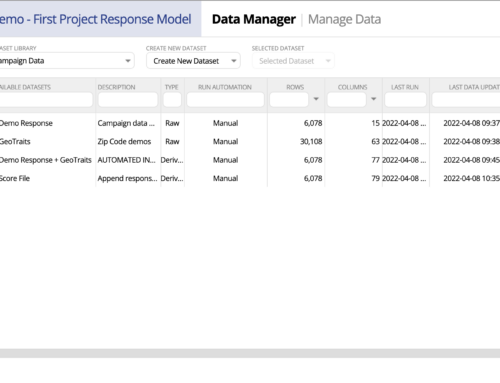What is Segmentation?
Segmentation is a universally understood construct that does not need to be taught to be understood. We use it every day as we subconsciously put things into various buckets so we can quickly process them. Safe vs. harmful, easy vs. hard, interesting vs. uninteresting, white-collar vs. blue collar, gender, political ideology, and so on. Our ability to segment is overall quite good and has aided us greatly in our advancement. However, as we look to apply it more granularly our accuracy decreases and we might find ourselves misattributing characteristics to members of a segment. The overgeneralization of a segment is one of the biggest causes for segments not meeting expectations.
The simple definition of segmentation is:
“The division of something into separate parts or sections.”
On its face, this definition isn’t very compelling. However, once you include a “how” and “why”, it becomes more interesting. For this post, we will focus on marketing segmentation defined as:
How: “A designed subdivision of an audience into more homogeneous groups…”
Why: “…for the purpose of improved decision making and marketing relevance that leads to better marketing outcomes.”
Let’s unpack the definition and discuss its elements:
- First, the idea of a “designed subdivision” is to call out the fact that the process discussed is not a random one. There are multiple ways to perform a marketing segmentation, but a random way is not what we are talking about. Instead, we want a specific subdivision that will help us improve our marketing results. This specific subdivision comes from knowing which segments to market and which not to market as well as understanding what to market to each segment. For this, we need a method that gives us the specific subdivision we are seeking.
- Next, the definition says “into more homogeneous (of the same kind; alike) groups.” We say “more” because the starting audience as a whole may be homogenous already in some way (or not), but we want to find segments that are even more homogeneous on one or more factors. For example, we might want more homogenous mothers, people 50+, credit card revolvers, iPhone users, non-profit donors, etc. The more homogenous in our area of interest, the better. (Caveat: segments that are too small are not useful. We will discuss this more in a future article.)
- The next part of the definition states that the “purpose is improved decision making and marketing relevance.” Marketing segmentation done well provides insight that allows you to make better decisions such as what, when, how, and if to market. The key to segmentation that works rests in the accurate matching of segments to your use of the segments. You can think of this as segment relevance to your, what, when, how, where etc. If you are using a segment to target what to market, ask yourself how accurately are the segments matched to your offer options? If you believe a 50+ segment definition is sufficient to market a hearing aid product to, you may be disappointed in your results. A tight grouping of alike people will be more interested in what you have to share with them. In this example, more criteria are likely needed to define your segment and get the desired outcome.
- Finally, the whole point of marketing segmentation is that it “leads to better marketing outcomes.” If you know your segmentation is providing better outcomes, then it is achieving at least some if not all of its goal. However, what we often find is that the outcomes are unknown, unclear, or not much impacted by segmentation. That’s the impetus for this series of articles—to provide insight on how to get more out of your segmentation.
Segmentation is one of the many tools at a marketers disposal. Like any tool, it needs to be well built, well maintained, and properly used. As tools go, people often don’t maintain them and end up using them for things they were not designed for. When marketing segments are first developed, they are built with a purpose and so should be created to optimize member inclusion and exclusion by segment.
For example, if the segmentation is being used to send the most appropriate communication, a simple Life Stage Segmentation probably will not be informative enough to see the kind of improved results you are seeking. What we often find is segments are created for multiple purposes with the thought that knowing the profile of the segment is sufficient to interpret things like best communication, best offer, expected performance, etc. In reality, general segmentation systems are not optimized sufficiently to the uses marketers have for them and the results do not provide the desired lifts.
While the Life Stage Segmentation may provide some lift in performance, it will more often than not lead to unsatisfactory results. Why? Because the segments in this example, and in other examples, were not designed to optimize communication response to one of several specific communication options. Couple this with the fact that segmentation often involves the use of demographic, firmographic, psychographic, etc. data which is directionally accurate, but also prone to errors. It makes it very difficult to try and “know” something as specific as which of several communication options will perform the best for a segment. The most likely outcome is that none will outperform the control and most will underperform it leaving you disappointed and frustrated that your “segmentation doesn’t work.”
So how does one go about making their segmentation more optimized to achieve a specific purpose when that purpose can change constantly? That is the question we will begin to answer in the next article focused on the various methods of segmentation including each of their pros and cons while tying this back to improving the effectiveness of segmentation.
Read Six Steps to Reach Your Ideal Donors to see how you can use segments to increase fundraising and maximize efficiency.
Subscribe to our blog to receive an update when the next post is published!


